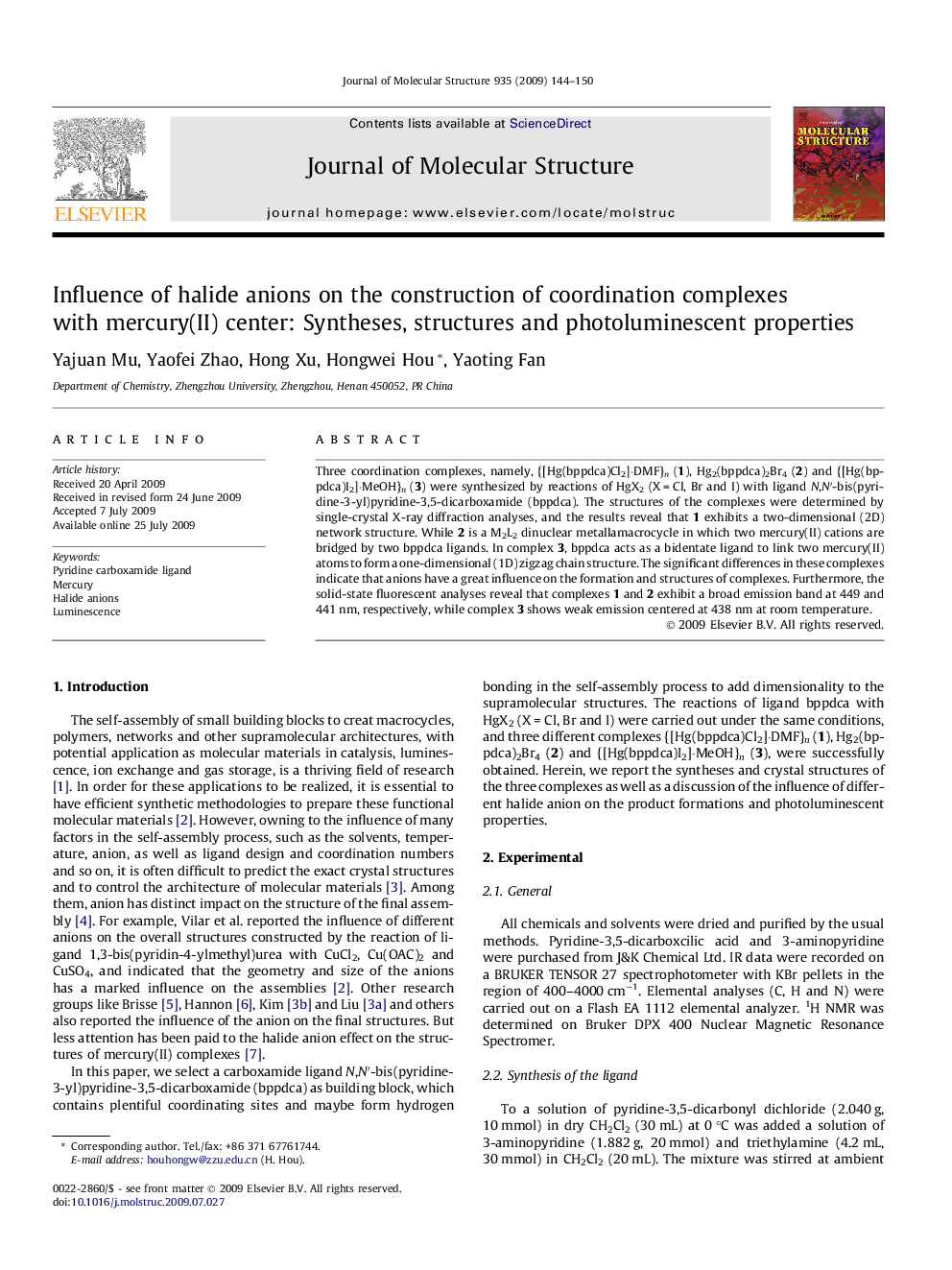| Article ID | Journal | Published Year | Pages | File Type |
|---|---|---|---|---|
| 1404069 | Journal of Molecular Structure | 2009 | 7 Pages |
Three coordination complexes, namely, {[Hg(bppdca)Cl2]·DMF}n (1), Hg2(bppdca)2Br4 (2) and {[Hg(bppdca)I2]·MeOH}n (3) were synthesized by reactions of HgX2 (X = Cl, Br and I) with ligand N,N′-bis(pyridine-3-yl)pyridine-3,5-dicarboxamide (bppdca). The structures of the complexes were determined by single-crystal X-ray diffraction analyses, and the results reveal that 1 exhibits a two-dimensional (2D) network structure. While 2 is a M2L2 dinuclear metallamacrocycle in which two mercury(II) cations are bridged by two bppdca ligands. In complex 3, bppdca acts as a bidentate ligand to link two mercury(II) atoms to form a one-dimensional (1D) zigzag chain structure. The significant differences in these complexes indicate that anions have a great influence on the formation and structures of complexes. Furthermore, the solid-state fluorescent analyses reveal that complexes 1 and 2 exhibit a broad emission band at 449 and 441 nm, respectively, while complex 3 shows weak emission centered at 438 nm at room temperature.
